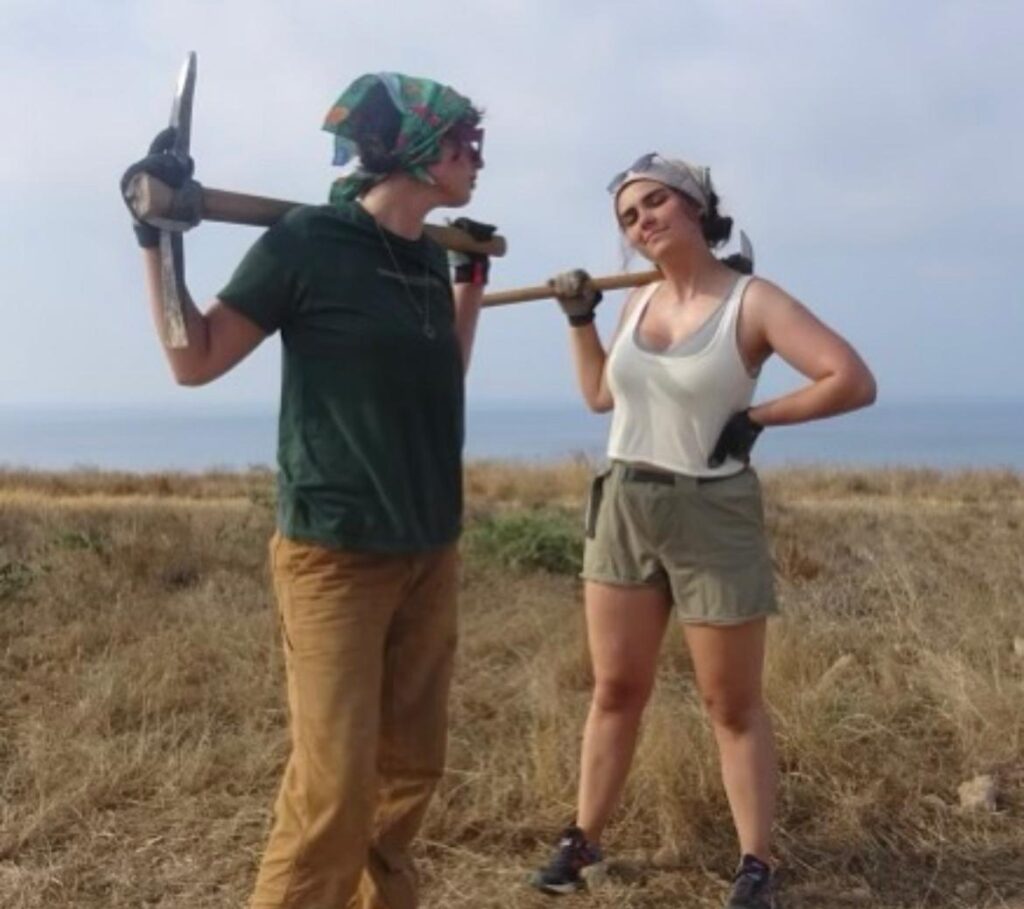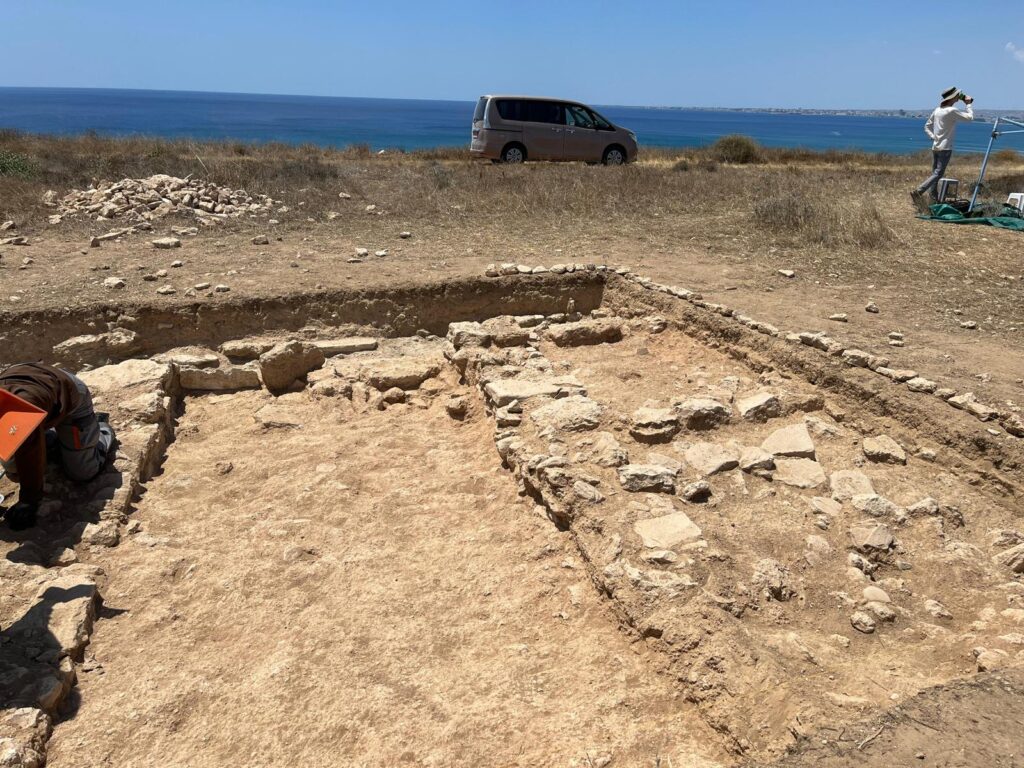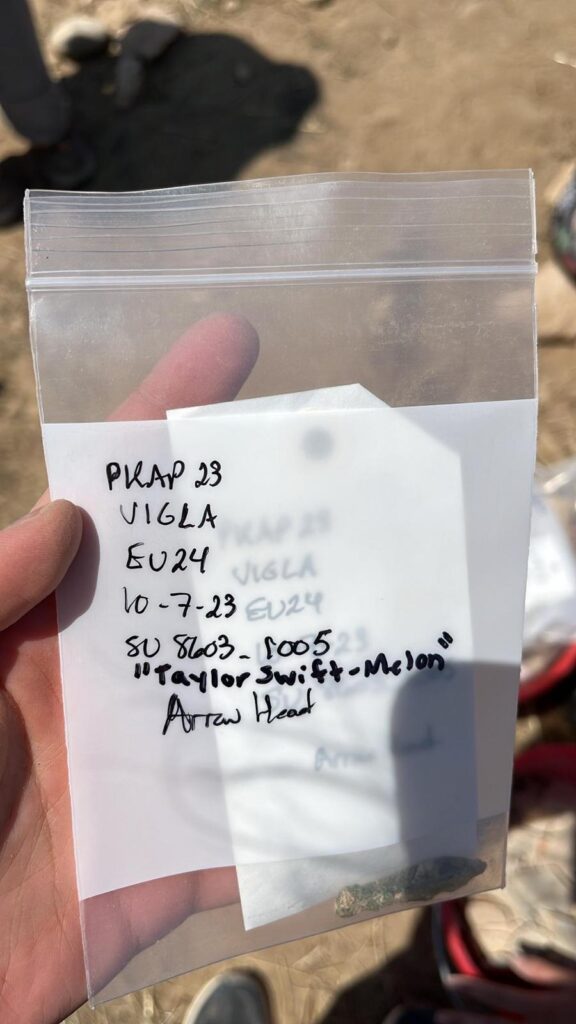(Guest post by Ella Arnold)
As I sit here after an (unexpected) morning at Terra Ombra and a long afternoon at the beach, I feel at a loss for where to begin when talking about the first two weeks of the PKAP Vigla 2023 excavation. From early morning Zorba’s runs, to pickaxing, to seeing the thumbprint of an ancient potter on a sherd of dishware, the first half of this experience has been nothing short of incredible. For me, however, the highlight of this season by far has been the excavation itself. I applied for the Vigla field school with a bit of trepidation; I had never experienced hands-on archaeological work and felt in over my head. However, my fear about whether or not I would enjoy the physical aspect of archaeology was quickly dissolved.

Our first morning on site was, to say the least, exhausting! With few of us acclimated to the intense work environment in the humid Cypriot heat, we all petered out pretty quickly. Despite this exhaustion, the first morning was filled with excitement as the undergraduates began turning up pottery sherds in the topsoil of our new trench, EU 24. While we quickly learned that these sherds are far from rare on site and turn up by the handful with every new tureya-full of dirt, the thrill of finding something last touched by humans in the Hellenistic era has not yet left me. [n.b. from Tom: tureya is an Egyptian Arabic (not Greek) word for a kind of large field hoe; Tom picked up the word in Egypt when he worked there, and now it’s the term used by the team at Vigla since that’s what he called them]

As the days go on, I’ve tried my hand at pickaxing, “tureya-ing” loose dirt and rubble, trimming the balk, and sieving buckets of dirt to look for pottery sherds. While this work is unlike anything I’ve ever done before, it is incredibly rewarding to participate in the discovery of these ancient artifacts and architecture. My most exciting find yet was a small arrowhead from a pile of overturned rubble in our trench–which we promptly named Taylor Swift–Melon after one of our favorite musicians and the delicious snack we had at “second breakfast.”

Though days at site have settled into a somewhat predictable routine and structure, there are surprises around every corner. For example, our digging schedule is influenced by the British military and their shooting practice schedule. It initially appeared that we would have little interference in terms of scheduling…until this morning, when they raised a red warning flag at about 7 am and informed us that they were starting shooting at 7:30 and we needed to get out. After leaving in a scramble, we ended up washing pottery at Terra Ombra for the rest of the morning and having to adjust our schedule for next week. In spite of this setback, we still managed to engage with artifacts and the site as best we could, which was a welcome opportunity.
With my muscles and joints getting achier, our hotel floor getting ever-sandier, and the halfway mark of our trip drawing nearer, I only grow more excited to return to site to contribute in whatever way I can to the excavation of the Vigla site. All of my reservations about the experience are gone, and I feel more motivated than ever to continue doing archaeology.
